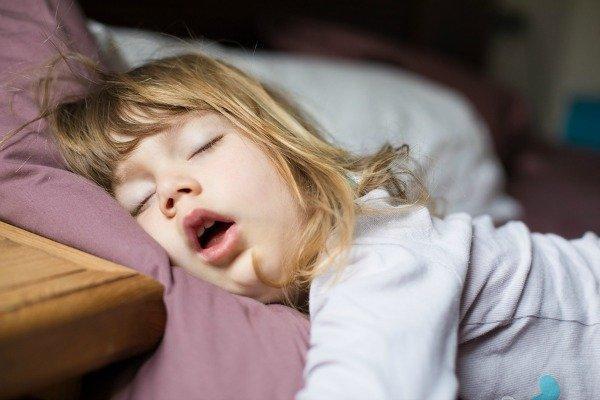For the umpteenth time, I found myself muttering, “Back to bed.”. In spite of the clock reading 9 pm, my preschooler remained awake. The air conditioner was keeping him awake, then the darkness of the room, and now his “scratchy” pajamas. Honestly, I thought this child was doing all he could think of to keep me awake till the wee hours of the morning!
It was as if lighting went off when my son was finally diagnosed with autism and SPD. Finally, all of the difficulties we’d been having with picky food, sleep, frequent meltdowns, and sensitivities to noise and bright lights made sense. Sleep was the most difficult to manage due to the symptoms worsening when it wasn’t getting enough. SPD might make it difficult to get a good night’s sleep.
There are various techniques and activities that can help, whether you’re a parent of a child with SPD or you individually encounter sensory issues. Here, you’ll learn about what sensory processing is, how it affects sleep, some symptoms to look out for, and how to improve sleep with a sensory-friendly bedtime routine.
What Is Sensory Processing Disorder (SPD)?
Sensing and processing information from your body’s eight senses, then responding to that information, is what the term “sensory integration” means to your brain.
Here are the eight faculties of the human body:
- auditory
- visual
- tactile
- olfactory
- vestibular
- proprioceptive
- interoception
- gustatory
Any unusual bodily responses can be seen in motor, verbal, or behavioral skill deficits when the central nervous system is unable to process any of this sensory information. Sensory Processing Disorder (often known as SPD) is the term used by occupational therapists to describe these symptoms.
Check out our Guide to SPD for more information on the different types of sensory processing disorders.
It is possible for a youngster to have dysregulation or sensory overstimulation/overload if he has difficulties processing and responding correctly to his environment. To fall asleep, a kid with SPD may have difficulties self-soothing or settling down.

SPD vs. Autism
My son, who has been diagnosed with Autism, also has sensory issues. More than half of children with autism have a co-occurring SPD, and sensory issues were recently added to the Diagnostic and Statistical Manual of Mental Disorders (DSM-5). However, this does not imply that every child with SPD also has Autism or that every Autistic child will also be affected by sensory difficulties.
Cortisol levels are known to rise in reaction to stress in children with Autism because their sympathetic and neuroendocrine systems are disrupted in this illness. Our cortisol levels rise when we are under heightened stress or when we feel the familiar “fight or flight” response to imagined danger.
This “danger” could be a crowded mall, a new teacher at school, or even a lump in their mashed potatoes for children with Autism. Similar to how my heart rate and blood pressure spike when I encounter a bug in my bathroom, kids with sensory dysregulation may experience both a physical and emotional response to experiences they are unable to comprehend.
Unrefreshed sleep is a common symptom of SPD, as you’ll see in the next section. As a general rule, sleep problems are linked to practically every behavioral and psychological disorder in children. Sleep disturbances affect 40 to 80 percent of autistic youngsters, often worsening their symptoms.
SPD vs. ADHD
Sleep Cycles, Sleep Problems, And The Neurochemicals Of Sleep
Until the process doesn’t go as it should and you’re suffering from insomnia, sleep is a complicated process of activating and inhibiting various portions of your brain. It appears to be a basic necessity!
It’s only at this point that you begin to grasp the enormity of what’s taking place while you’re attempting to sleep. Because we’re trying to oversimplify a complicated process, we’re going to concentrate on melatonin and cortisol as the key neurochemicals or hormones involved in sleep and sensory processing.
How Melatonin Helps Us Sleep
Our bodies have a 24-hour sleep-wake cycle known as a circadian rhythm. To go to sleep and get up on a regular schedule, your brain’s hypothalamus uses circadian rhythms to keep things moving. Your body’s release of melatonin, a neurochemical that helps you fall asleep, is controlled by the hypothalamus.
An imbalance in melatonin levels can disturb a child’s circadian cycle, making it more difficult for their parents to get them ready for sleep! When a kid has sensory processing disorder-related dysregulation, the opposite of low melatonin levels during the day and high melatonin levels at night (to induce sleepiness) might occur, causing a disruption in the sleep cycle.
How Cortisol Affects Our Sleep
Cortisol is another neurochemical that has an impact on sleep patterns. When children are anxious, stressed, overstimulated, or in sensory overload, the main stress hormone they release is cortisol. Cortisol levels are typically greater in the morning (to wake up the body and brain) and progressively fall during the day until they are at their lowest point at night. If the youngster is always in a state of dysregulation owing to sensory processing difficulties, the opposite can happen.
Sensory Processing Disorders And Sleep Problems
As a neurochemical process, sleep acts to rejuvenate our bodies and brains for a new day of learning and functioning. Neurochemicals that regulate your sleep-wake cycle or sleep patterns (REM, non-REM) aren’t interacting properly, causing sleep disorders and disrupting your daily life.
High levels of cortisol and low levels of melatonin are normal (and recommended) for children with a sensory processing disorder, but we know that this isn’t always the case.
Sleep problems in children may be linked to unusual sensory activities. This is supported by research showing that behavioral and physiological markers accurately identify excellent sleepers from poor sleepers with an accuracy of 85.7%.
One of the main goals of sensory integration treatment is to stimulate the synthesis of neurochemicals that function as a counterbalance to one another and help regulate and arouse the body’s systems, including sleep.

How to Recognize SPD
An “aha” moment may occur for you if you’re unfamiliar with the concept that behavior might be caused by a person’s sensitivity to sensory input being either too low or too high. The first step in helping your child learn to manage their sensitivity is to detect their sensory seeking or avoiding behaviors.
Parenting a child with SPD necessitates much investigation. Understanding the trigger or whether your child is sensory seeking or avoiding may be straightforward to recognize the various behaviors, but this may not always be the case. Another problem is that this might fluctuate from day to day or even hour to hour.
The good news is that you’ll be able to predict (with amazing accuracy) how your child will react in a given situation if you watch them and see a pattern in their response to certain stimuli. Using this information, you may better advocate for your child and teach him or her to identify their own stressors and build self-esteem and resilience.
Sensory Avoiding
Sensory Seeking
However, these descriptions are not thorough and are meant to provide a visual representation of what sensory-seeking and avoidance behaviors might look like. Both lists may indicate that your child displays a mixture of oversensitivity and under-sensitivity depending on the day or situation. One symptom appears on both lists, and that is difficulty sleeping, as you may have observed.
Sleep Challenges for SPD in Children
Have you ever experienced a night where the room was so hot that you couldn’t sleep, no matter how hard you tried? There are times when I wake up in the middle of the night because I’ve consumed too much caffeine before going to sleep. Like that, but much worse and practically every night for children with SPD.
Disrupted sleep is a major warning flag for parents and professionals alike, and it’s possible that your own investigation into sensory difficulties was sparked by your own experience as a parent. Everyone needs sleep, but children’s brains, which are still growing and developing, require it much more. Nearly all aspects of functioning and development are compromised if it’s missing.
How SPD Affects Sleep
On every level, children with sensory difficulties have difficulty sleeping. When it’s difficult for someone to sleep, it could be due to a variety of reasons: the room is too dark or too light, they are bothered by the heater, their mattress is bumpy, or they can’t stop thinking about something that happened earlier in the day. They can also wake up early in the morning due to these same circumstances, no matter how fatigued their small bodies are at night.

There is a problem with sleep and sensory disorders because they are cyclical. Motor coordination, attention, cognitive ability, and executive functioning are all affected by sleep, as are behavior and personality traits. It’s possible for youngsters who are already sensitive to sensory input to have even more intense reactions when they don’t get enough sleep.
In contrast to children without SPD, those with SPD have a difficult time shutting down the region of their brains that processes sensory stimuli, preventing them from sleeping and increasing their negative behaviors.
The Science Behind SPD and Sleep
When it comes to children’s sleep, researchers found that tactile (touch) sensitivity was the most significant predictor of sleep difficulties, as well as the most significant predictor of behavioral problems.
Parents of children with sleep issues and SPD know how rapidly their children’s behaviors escalate when they don’t receive the rest they require, and how difficult it may be to get them (and yourself) the sleep you both badly need to function better.
More than 14,000 youngsters with eczema (a severe skin rash) were shown to have a decreased quality of sleep as a result of their sensory sensitivities. Researchers have found that poor sleepers have problems with sensory gating throughout the moment when they are unable to fall asleep. As the brain’s gatekeeper for sensory information, sensory gating controls the brain’s ability to block out unwanted sensory stimuli.
SPD and Nervous System Function
Children with SPD have another unique finding, which involves the parasympathetic nervous system (PNS) (PNS). When the sympathetic nervous system and the autonomic nervous system operate together, we can better respond to what’s going on in the world around us. Our fight-or-flight response is triggered by the sympathetic nervous system, while the parasympathetic nervous system (PNS) seeks to calm this stress response.
Children with SPD have a hard time regulating themselves and recovering from stressful situations. To cope with a wide range of shifting stimuli, people with high PNS activity are more adaptable than those with low PNS activity, who are less adaptable.
When my son would come out of his room for the tenth time complaining about anything else, I would get so irritated that I couldn’t stand it anymore. As a result, I’ve learned to adjust his bedtime ritual and bedroom in accordance with his unique sleep needs.
An outsider’s perception of a child’s misbehavior or even defiance can be distorted by sensory processing difficulties. Most children have difficulty going to bed, and when they’re exhausted, they turn into gremlins and fight sleep with everything they’ve got. When it comes to kids who suffer from sensory overload, no matter how hard they try, they are unable to control their responses.
How To Help Sleep Issues For Those With SPD
An occupational therapist can help your child who has trouble falling asleep due to sensory processing disorder develop a nightly routine and sensory diet just for him.
Deep Pressure Therapy
Activities that use pressure on the body to stimulate the creation of serotonin, which aids in the production of melatonin, are known as Deep Pressure Therapy or Deep Touch Pressure.
Weighted blankets and strong massage may be useful additions to your bedtime routine for increasing melatonin production.
A sensory compression sheet is an additional choice. Compression is provided by the use of these plush, stretchy sheets, which are wrapped around the mattress. Compared to weighted blankets, they are more breathable, but you do not get the personalized compression that a weighted blanket provides through the use of various weights.
Your child can choose between a weighted blanket or a sensory compression sheet.
Reduce Blue Light Exposure Before Bed
The creation of melatonin is impeded by light, so limit your use of televisions, iPads, and other bright screens at least an hour before bedtime. As we discussed in our post on sensory lighting, it’s important to think about the lighting in your child’s room and whether or not it promotes appropriate sleep habits.
Check out that article for many more wonderful tips on how to illuminate your home at night without disrupting your circadian cycle.

Supplements
It’s important that you consult with your child’s doctor before trying Melatonin supplements.
Vitamins, herbs, and minerals can also be used to assist youngsters in sleep. There are a number of nutrients that can help, including Zinc, Magnesium, Vitamin B6, and B12.
Check out Harkla’s post on Melatonin and Autism for more details.
Aromatherapy
Relaxation can be achieved by the use of essential oils in baths, sprays, lotions, and vaporizer treatments such as lavender, vanilla, and chamomile (thereby decreasing cortisol levels).
Preparing Your Child’s Bedroom
What Pajamas Are Best?
What Sheets and Blankets Should I Choose?
Other Bedroom Considerations
Ideas for Bedtime Sensory Activities & Tools
Blowing Bubbles
The act of blowing bubbles requires youngsters to take a deep breath and completely empty their lungs, which can be soothing. Bubble blowing, like deep breathing in yoga and meditation, can help children relax and quiet down.
Try Essential Oils
When it comes to getting toddlers to sleep, essential oils can be really helpful. In some cases, a blend particularly for children is available from the company. When using essential oils, they can be applied to the skin, massaged into the skin, or diffused.
Cuddle Swings
Cuddle swings resemble a large sheet draped from the ceiling and completely encircle the child, much like a hammock. It can provide deep pressure therapy and stimulate the vestibular system by swinging them back and forth, which stimulates the nervous system.
Weighted Blanket
A weighted blanket is a thick blanket filled with weighted plastic or glass pellets sewed into many pockets. Similar to being hugged, this gives a moderate restriction, much like being held or cuddled. Children with SPD may benefit greatly from this type of deep pressure therapy.
Pillow Fort
At the end of the day, kids who are sensory seekers tend to have a lot of extra energy. This is the time of day when parents are at their most drained and inventive when it comes to playing with their children. If you want your kids to burn off some steam, have them make a pillow fort out of extra blankets and pillows (you may even find them sleeping in it once their construction work is done).
Noise-canceling headphones
Some children find it difficult to fall asleep at night because they are unable to block out the outside world. Tossing and turning for hours after bedtime could be as simple as the sound of the air conditioner or the wind blowing. When it comes to getting a good night’s rest, a noise-canceling headset could be a great help.
Advice for Adults with SPD
Conclusion
It takes time, patience, and a lot of detective work to figure out what your child’s specific sleep triggers are, but once you do, you’ll be able to come up with solutions that will help them deal. Is your child a night owl that always needs a companion to sleep with them? A plush animal or a weighted blanket may be of use.
When it comes to designing a sensory-friendly sleep routine tailored to your child’s individual requirements, no one knows your child better than you. Even if you can’t turn off their overactive senses completely, you can help them sleep better by dimming the lights a bit.
FAQs
Could my child have sleep apnea?
Does my child need medication?
Could there be side effects worsening sleep?
Vote for this post!

![Top Rated CPAP Machine Buyer’s Guide [current_date format=’m/Y’]](https://bestpillowsleepers.com/wp-content/uploads/2023/03/best-cpap-machine-img_6405d72310053-400x300.jpg)
![The 11 Best Cooling Weighted Blankets [current_date format=’m/Y’]](https://bestpillowsleepers.com/wp-content/uploads/2023/01/best-cooling-weighted-blankets-img_63d4ff15c615d-400x300.jpg)
![Ultimate Guide to Choosing a Best Cooling Mattress Pads [current_date format=’m/Y’]](https://bestpillowsleepers.com/wp-content/uploads/2023/01/best-cooling-mattress-pads-img_63c403115126b-400x300.jpg)
![Ultimate Guide to Choosing a Best Cooling Mattress [current_date format=’m/Y’]](https://bestpillowsleepers.com/wp-content/uploads/2023/01/ultimate-guide-to-choosing-a-best-cooling-mattress-img_63bcdba870d77-400x300.jpg)
![Ultimate Guide to Choosing a Best Cooling Comforters [current_date format=’m/Y’]](https://bestpillowsleepers.com/wp-content/uploads/2023/01/ultimate-guide-to-choosing-a-best-cooling-comforters-img_63bba2f5cd3ce-400x300.jpg)